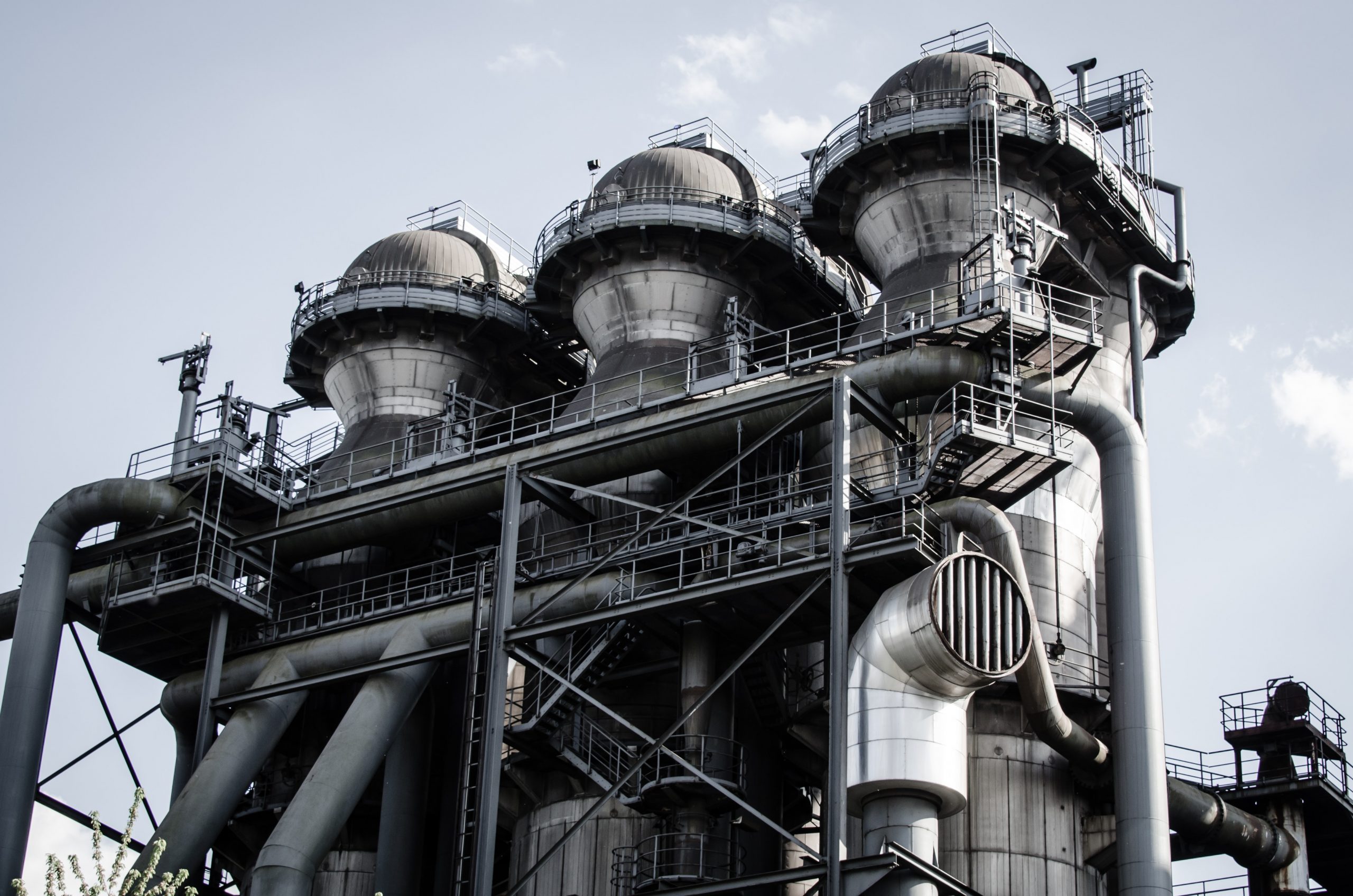Unveiling the Definition of Steel Structure: Discovering the Unmatched Strength and Limitless Possibilities of Modern Construction
A steel structure refers to a construction system made primarily of steel components, such as beams, columns, trusses, and plates, that are connected together to form a stable and rigid framework. These structures are designed to support loads and provide stability, durability, and strength in various applications, including buildings, bridges, industrial facilities, and infrastructure projects. Steel structures are an exceptional choice when it comes to constructing buildings, bridges, industrial facilities, and infrastructure projects. Their primary components, including beams, columns, trusses, and plates, work harmoniously together to create a stable and rigid framework.
One of the key advantages of steel structures is their ability to support heavy loads. Thanks to the inherent strength of steel as a material, these structures can withstand significant weights without compromising their stability. This makes them ideal for projects that require durability and reliability. In addition to their load-bearing capabilities, steel structures offer outstanding stability. The interconnected nature of the components ensures that the entire framework remains intact under various conditions. Whether it’s extreme weather events or seismic activities, steel structures can provide the necessary resilience needed for long-term performance.
Moreover, steel is known for its exceptional durability. It is resistant to corrosion and deterioration over time compared to other construction materials. This quality significantly extends the lifespan of steel structures while reducing maintenance costs in the long run. Furthermore, flexibility in design is another advantage offered by steel structures. The versatility of steel allows architects and engineers to create innovative designs with ease while ensuring structural integrity. Whether it’s designing open floor plans or incorporating unique architectural features into a building project – steel provides endless possibilities. Lastly but equally important is sustainability. Steel is a highly sustainable material due to its recyclability properties. At the end of a structure’s life cycle or during renovations and demolitions processes – most components can be recycled into new products instead of ending up in landfills. Overall, choosing a steel structure means opting for strength, durability, and stability while also embracing design flexibility and sustainability at every stage of your project development
Steel structures are known for their versatility, as they can be customized and adapted to meet specific design requirements. They offer several advantages, including high strength-to-weight ratio, durability, resistance to fire, seismic forces, and extreme weather conditions. Steel structures can be easily fabricated off-site, allowing for faster construction timelines and reducing on-site labor and associated costs.
Steel structures are truly remarkable when it comes to versatility. They possess the ability to be customized and adjusted according to specific design requirements, making them a top choice for architects and engineers alike. One of the key advantages of steel structures lies in their high strength-to-weight ratio. This means that they can bear heavy loads while remaining relatively lightweight compared to other materials. This not only allows for more efficient designs but also reduces transportation costs during construction. Durability is another notable feature of steel structures.
Steel is highly resistant to wear and tear, ensuring that the structure remains intact even under challenging conditions. Whether it’s facing extreme weather conditions or seismic activity, steel structures have proven time and again their ability to withstand these forces without compromising safety. Notably, steel is also fire-resistant, providing an added layer of protection in case of emergencies. This makes it a preferred choice for buildings where fire safety is a critical concern. Additionally, the off-site fabrication capability of steel structures offers significant benefits. By prefabricating components in controlled factory environments, construction timelines can be greatly reduced. This not only saves valuable time but also minimizes on-site labor requirements and associated costs. In summary, steel structures provide numerous advantages such as versatility, high strength-to-weight ratio, durability against fire and extreme weather conditions, as well as faster construction timelines through off-site fabrication techniques. These factors make them an exceptional choice for any project seeking efficiency without compromising on quality or safety standards.
The design of a steel structure involves analyzing loads, determining the appropriate size and arrangement of steel members, and ensuring compliance with relevant codes and standards. Advanced computer-aided design (CAD) software and structural analysis tools are used to create detailed 3D models and perform simulations to optimize the design for efficiency and safety. When it comes to designing a steel structure, there are several crucial factors that need to be considered. First and foremost, a thorough analysis of the loads is essential.
This involves understanding the various forces acting upon the structure, such as wind, snow, and seismic activity. Once the loads have been determined, it is necessary to select the appropriate size and arrangement of steel members. This requires careful consideration of factors like strength requirements, deflection limits, and cost-effectiveness. It’s important to strike the right balance between structural integrity and material efficiency. In addition to these considerations, compliance with relevant codes and standards is paramount.
Building codes exist for good reason – they help ensure safety and reliability in construction projects. Adhering to these regulations not only protects occupants but also helps avoid legal issues down the line.
To assist in this intricate process, advanced computer-aided design (CAD) software comes into play. These powerful tools enable engineers to create detailed 3D models that accurately represent their designs. Using CAD software allows for efficient visualization of structural elements before any physical work begins. Furthermore, structural analysis tools are employed alongside CAD software for simulations that optimize both efficiency and safety aspects of the design. These simulations provide valuable insights into how different configurations will perform under various load scenarios. By leveraging CAD software and structural analysis tools together in tandem with engineering expertise, designers can develop steel structures that meet performance requirements while minimizing costs – ultimately creating safe yet efficient designs.
In conclusion, designing a steel structure involves a meticulous process of load analysis, selection of appropriate members’ size and arrangement while adhering to relevant codes and standards using advanced computer-aided design (CAD) software along with structural analysis tools for optimization purposes.
During the fabrication process, steel members are cut, shaped, and assembled according to the design specifications. Welding, bolting, or a combination of both methods are used to connect the steel members to form the desired structure. Quality control measures are implemented to ensure that the final product meets the required standards and specifications.
The fabrication process of steel members involves a series of crucial steps to create a structure that meets the design specifications. The first step is cutting, where the steel members are precisely shaped and sized according to the design requirements. This ensures that the final structure will be built with accuracy and precision.
Once cut, the steel members are then carefully shaped into their desired forms. Skilled workers use specialized tools and techniques to bend, shape, or mold the steel as needed. This step is vital for creating components that fit together seamlessly during assembly.
After shaping, it’s time for assembly. Welding and bolting are commonly employed methods to connect the steel members together. Welding involves fusing two or more pieces of metal using heat and pressure to create strong joints.
Bolting, on the other hand, uses bolts or screws to firmly secure components in place. In some cases, both welding and bolting methods may be used in combination for added strength and stability. This depends on factors such as structural requirements and design specifications. Throughout every stage of fabrication, stringent quality control measures are implemented to ensure that the final product meets required standards and specifications.
Skilled inspectors monitor each step of the process to detect any deviations from quality standards promptly. By adhering strictly to quality control protocols during fabrication, manufacturers can guarantee that their products not only meet but exceed expectations in terms of durability, safety, functionality, aesthetics – all essential aspects when it comes to creating strong structures built from steel members.
Overall, through careful cutting processes followed by accurate shaping techniques alongside precise welding or bolting methods – backed by efficient quality control measures – manufacturers can confidently deliver high-quality structures made from steel members perfectly tailored according to given design specifications.
The construction of a steel structure involves the assembly and erection of fabricated steel members at the construction site. The steel members are lifted into position using cranes and secured together using bolts or welds. Safety precautions and proper sequencing of erection steps are essential to ensure a smooth and efficient construction process. When it comes to constructing a steel structure, precision and safety are paramount. The process involves carefully assembling and erecting fabricated steel members at the construction site. With the help of cranes, these steel members are lifted into position and skillfully secured together using bolts or welds. To ensure a smooth and efficient construction process, it is crucial to prioritize safety precautions.
This includes having well-trained personnel who follow all necessary safety guidelines throughout each step of the erection process. By doing so, we can minimize the risk of accidents or delays that could otherwise hinder progress. In addition to safety measures, proper sequencing of erection steps is equally important. Following a methodical approach ensures that each component is placed in its designated position at the right time.
This careful planning helps maintain structural integrity while streamlining the overall construction timeline. By adhering to these best practices in steel structure construction, we can achieve exceptional results with efficiency and reliability. Whether it’s a small-scale project or a large-scale development, attention to detail and adherence to safety protocols will always be our top priorities as we strive for excellence in every endeavor.
Overall, steel structures offer numerous benefits, including strength, durability, design flexibility, cost-effectiveness, and sustainability, making them a popular choice in the construction industry. Steel structures are indeed an exceptional choice in the construction industry, offering a wide range of benefits that contribute to their popularity. One of the key advantages is their remarkable strength, which ensures that buildings can withstand various loads and environmental conditions.
This strength provides a sense of security for both builders and occupants, guaranteeing long-term structural integrity. Durability is another noteworthy benefit of steel structures. Steel is resistant to corrosion, pests, and decay, making it highly reliable and low-maintenance. Unlike other materials that may deteriorate over time, steel structures retain their quality for decades with minimal upkeep required. This not only saves on maintenance costs but also extends the lifespan of the building.
Design flexibility is a significant advantage offered by steel structures as well. Steel’s inherent strength allows for large open spaces without the need for excessive support columns or walls. This opens up a world of possibilities in terms of architectural design and interior layout options. Whether it’s creating spacious offices or designing soaring atriums, steel allows architects and designers to bring their visions to life. Cost-effectiveness is yet another aspect where steel structures shine brightly.
Compared to traditional construction methods, using steel can result in significant cost savings during both construction and operation phases. The availability of prefabricated components reduces construction time significantly while minimizing labor costs. Additionally, its durability means fewer repairs and replacements over time. The sustainability factor cannot be overlooked when discussing the benefits of Steel structures either. Steel is one of the most recyclable materials available today with high recycling rates ensuring minimal waste generation during demolition or renovation processes. Furthermore, using recycled steel in new constructions helps reduce energy consumption compared to producing new materials from scratch.

